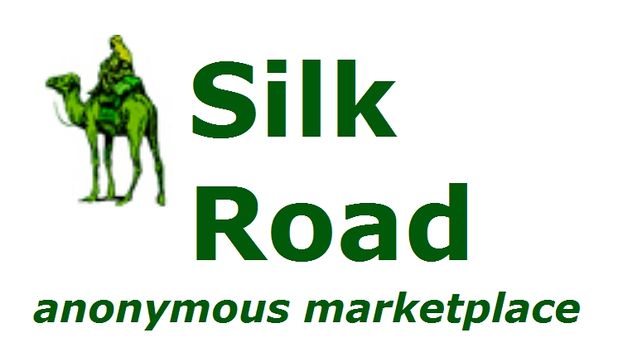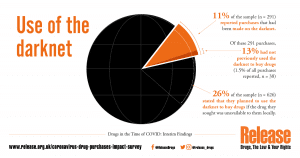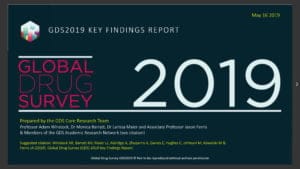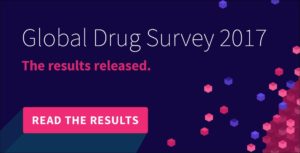Delivery dilemmas
People buying and selling drugs are careful to minimise the risks of getting caught. Drug dealers typically separate out the handling of payment and delivery of drugs; those buying drugs try only to do business with those who are known to them.
But how to people buying and selling drugs online via the darknet or cryptomarket avoid detection by police and other law enforcement agencies?
That’s the subject of a fascinating new study from Mancunian academics Judith Aldridge and Rebecca Askew:
Delivery dilemmas: How drug cryptomarket users identify and seek to reduce their risk of detection by law enforcement
published at the end of 2016 in the International Journal of Drug Policy and, refreshingly, available at no cost here.
The study
The researchers analysed 600 selected texts produced by vendors operating on the first major drug cryptomarket, Silk Road alongside data extracted from the marketplace discussion forum that include buyer perspectives. They applied Fader’s (2016) framework for understanding how drug dealers operating ‘offline’ attempt to reduce the risk of detection and arrest: visibility reduction, charge reduction and risk distribution.
Context
As drug dealers draw the attention of potential customers they risk simultaneously drawing law enforcement attention
the need not to be known as a drug-dealer is offset by the more pressing need to be known as a drug-dealer.
Drug cryptomarkets address this paradox by bringing together buyers and sellers of illegal drugs in an online ‘hidden’ and global marketplace; they have been defined as: marketplaces that host multiple sellers; that provide participants with anonymity via their location on the hidden web and use of cryptocurrencies for payment; and that aggregate and display customer feedback ratings and comments.
The world’s attention was brought to the first major drug cryptomarket, Silk Road, in 2011, which drug researchers initially described with incredulity asking:
With illegal drug sales carrying the risk of detection and arrest, how can they be bought and sold so openly?
In traditional (offline) drug markets, a range of strategies are used by drug sellers to minimise the risk of detection and arrest by law enforcement allowing
drug markets to flourish in spite of prohibition. But where do cryptomarket drug sellers and buyers locate law enforcement risk, and how do they seek to reduce the risk of detection when effectively operating in plain sight of law enforcement?
The researchers identify three main strategies:
- Visibility reduction
- Charge reduction
- Risk distribution

Visibility reduction
While cryptomarket vendors might be thought to reduce their risk of detection and arrest by contracting out the face-to-face hand-over component of transactions to postal delivery services, it was risks in connection to shipping and delivery that most concerned buyers and sellers. The marketplace might be hidden online, but for the system to work, the drugs themselves have to be delivered to a real person. Over half of the listings on Silk Road specified delivery practices designed to reduce the risk of detection.
Some vendors instructed customers to provide real, rather than fake, names when placing orders to reduce the chances of shipment interception:
Your postman knows your name. Please give me your real name – the same name all your mail goes to. Using fake names can alert the authorities, meaning your shipment may not arrive, and may actually get seized. Neither of us wants that to happen.
Buyers were often advised to avoid shipping services that may require signatures, and not to accept packages requiring an unanticipated signature, instead
simply accepting the loss.
Buyers themselves shared advice on the discussion forum aimed at raising the visibility of ‘legitimate’ routine deliveries to avoid raising the suspicion of local delivery workers:
I like to order a lot of stuff online so my mailman doesn’t suspect the illegal stuff. Always keep to your usual routine too. If you usually go for a run when the mailman comes, okay. But if you suddenly start not being home for deliveries, that’s suspicious.
Charge reduction
This term refers to practices adopted by drug dealers to reduce the severity of legal penalties in the event they are arrested. The researchers found evidence of ‘drop shipping’ methods common in legal e-commerce on Silk Road. Drop shipping allows vendors to trade without ever possessing illegal substances themselves, by placing orders with other sellers (on the marketplace or elsewhere) on behalf of their customers to whom these other sellers ship directly. A number of vendors provided in-depth guides to drop shipping as a tool for importing from China (where many drugs are manufactured) and other countries.
Vendors were commonly advised to use gloves during preparation and delivery of shipments to reduce evidential ties to their activities. But as with much ‘good practice’, this was not always considered practical, and could even be thought suspicious.
Risk distribution
Just as “real world”/offline drug dealers work in teams, separating drugs and money to spread the risk of detection, so too do some dealers operating in cryptomarkets, making it harder to identify any particular individual. Buyers may, of course, adopt the same strategy by sending someone else to pick up your package so that the buyer themselves isn’t recorded on camera on in the position of showing their own ID.
Conclusions
The researchers conclude that:
Silk Road participants neither viewed themselves as immune to, nor passively accepting of, the risk of detection and arrest. … Cryptomarkets as ‘illicit capital’ sharing communities provide expanded and low-cost access to information enabling drug market participants to make more accurate assessments of the risk of apprehension. The abundance of drug market intelligence available to those on both sides of the law may function to speed up innovation in illegal drug markets, as well as necessitate and facilitate the development of law enforcement responses.
However, although Aldridge and Askew found that many buyers and sellers using drug cryptomarkets were aware of the risks of detection and frequently discussed minimising them, it was clear that many often did not bother to follow their own advice, trusting to luck and the perceived relatively low level of interest from law enforcement agencies.







